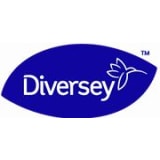This informal CPD article on the importance of allergen management and control in food processing and manufacturing was provided by Diversey, leaders in technologies that keep food fresher, better tasting and more accessible to people. In today’s food processing market, allergens are becoming a significant cause for concern. Food and beverage processors and manufacturers need to implement comprehensive allergen control and management programs to avoid product recalls and protect their consumers.
What are Food Allergies and Allergens?
A food allergy is an immune system response to a food that the body recognizes as foreign and harmful to it. In an attempt to protect itself, the body releases chemicals which trigger allergic symptoms that can affect the respiratory system, gastrointestinal tract, skin, or cardiovascular system. Depending on the individual’s sensitivity to the allergen, reactions can range from low grade fevers, rashes and flu like symptoms to more severe conditions like anaphylactic shock which could result in death.
Individuals may be allergic to a product as a whole or ingredients, mainly proteins, contained in a product. Research by Elucidare Limited estimates up to 150 million people worldwide suffer from a food allergy. To illustrate the increasing seriousness of the issue, in the first nine months of 2017, the European Commission’s Rapid Alert System for Food and Feed (RASFF) portal listed 102 public health incidents related to allergens. Of the 102,100 were listed as ‘serious’ with 15% originating from consumers. In 2016, the U.S. Department of Agriculture reported more recalls for allergens than E. coli, Salmonella and Listeria contamination.
The 14 major food allergens are:
- Celery
- Cereals containing wheat
- Crustaceans
- Eggs
- Fish
- Lupin
- Milk
- Molluscs
- Mustard
- Nuts (tree nuts)
- Peanuts
- Sesame
- Soya
- Sulphur dioxide (sulphates)
Allergen Control Points in the Manufacturing Process
INGREDIENT STORAGE
Food and beverage manufacturers have a responsibility to identify allergens that are contained in their products and take action to isolate them from other non-allergen products processed in the same facility. Ingredients that contain allergens should be stored separately from non-allergen ingredients. Finished products containing that ingredient should also be isolated from other non-allergen products.
PRODUCTION SCHEDULING
Formatting production schedules to isolate products containing allergens is a common tactic in allergen management. Products containing allergens could be scheduled to run at the end of the day or shift or could be isolated to a particular production line, to avoid contact with other non-allergen products. Proactive scheduling will not only prevent cross-contamination, but can also save on employee time, sanitation costs, and production down time.
FOOD CONTACT SURFACES
Product changes on a single production line is one of the main sources of allergen contamination. Many times, procedures are not in place to identify products that may be the same in name, but are made with different formulations.
It is important to remember that allergen contamination from food contact surfaces will not equally distribute itself throughout the products in a subsequent run. Allergen contamination tends to ‘slug’ through, usually at the beginning of the product run, making it difficult to detect as only a small proportion of the overall production run may pose a risk. Effective cleaning and sanitizing must be performed to remove all allergen-containing product once the run is concluded.
NON-FOOD CONTACT SURFACES
Non-food contact surfaces also need to be thoroughly cleaned and sanitized to remove allergens. These areas may not come into direct contact with non-allergen foods, however, factors like employee handling and high pressure spraying can lead to recontamination of clean surfaces with allergen-containing debris.
It is not uncommon in a facility that has multiple lines in one processing room to observe one line being actively cleaned while another, in close proximity, is packaging a product. High pressure spraying in and around the line being cleaned can easily transfer and contaminate the running line.
SAMPLING AND TESTING
Test kits that can detect allergens in food products, on equipment surfaces and in CIP rinse water are available for detecting almond, egg, gliadin, hazelnut, milk, peanut, and soy residues. Usually, in a manufacturing environment, testing is performed by quality assurance staff or specially trained personnel.
APPROPRIATELY LABELLED PACKAGING
Packaging can become a problem if formulations are not understood. If employees are not aware of a product that contains an allergen, they may change packaging without considering cleaning and package into a non-allergen labelled package.














